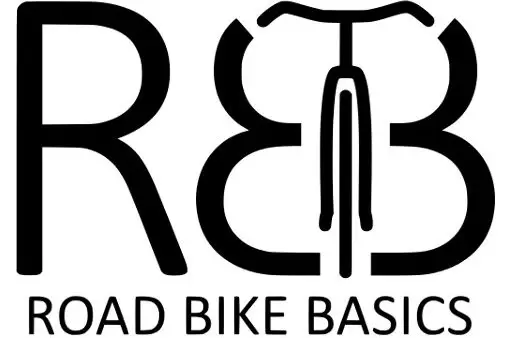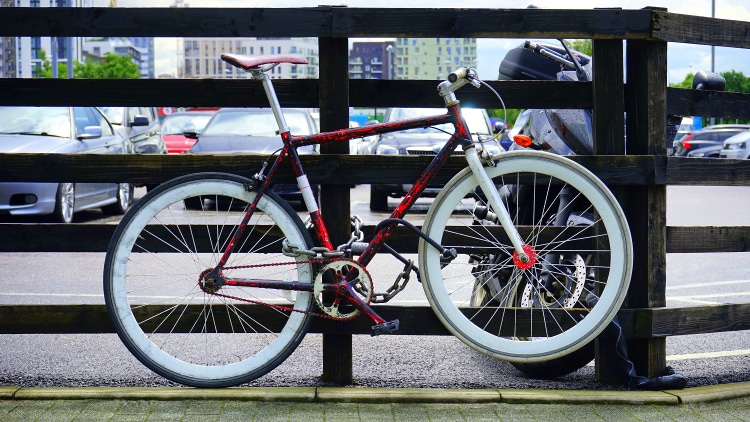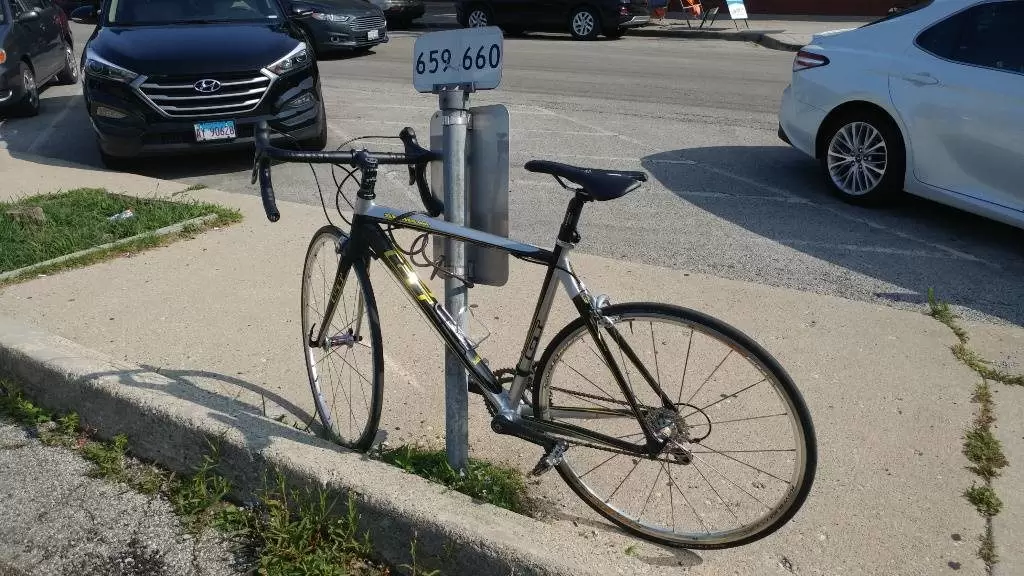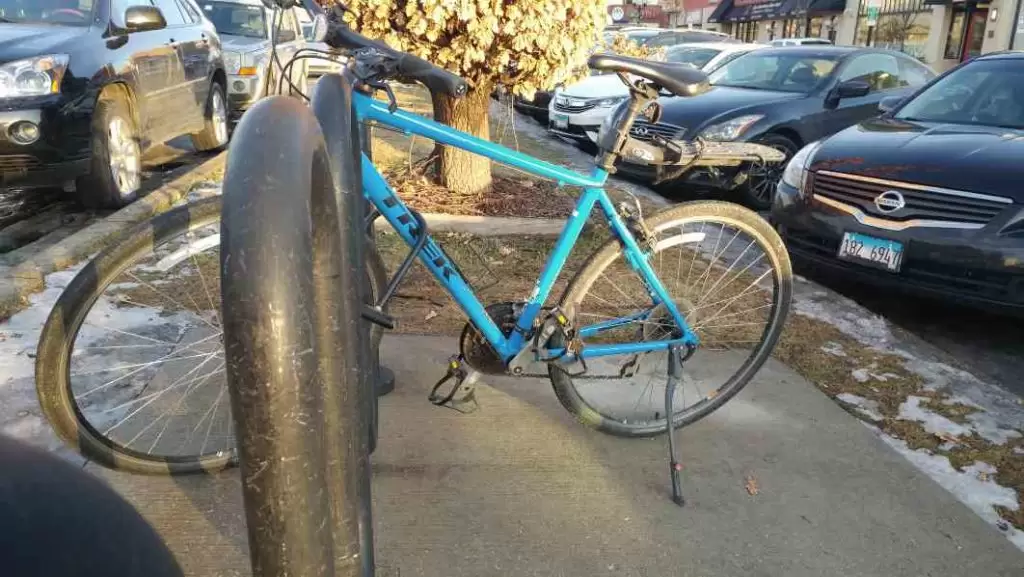When I could commute on my bike, I would check the weather forecast religiously just to avoid leaving my bike out in the rain. Too many rides on beautiful days got me wondering, what even happens to my bike when it rains? Here’s what I’ve found so far.
You can absolutely leave your bike out in the rain, but you need to be careful about it. Not every accessory can take the water, and you’ll need to do regular maintenance if you want your bike to stay in top shape.
Your saddle will be fine
The biggest fear I had about leaving my bike out in the rain was whether or not the saddle would be damaged. Thankfully, saddles are already designed to handle a little moisture that comes in the form of body sweat. So, rain isn’t a huge problem as long as you give it ample time to dry out fully.
A bigger concern that you should have is whether or not you’ll get wet when you sit down for a ride after the rain. A popular way to keep the water off your saddle is to use some sort of plastic cover that is easy to wipe off or remove. Plastic bags and shower caps seem to be the most commonly suggested solutions. Which is great because they are both incredibly cheap and reusable!
On a quick note, do not remove your seat post if it is going to rain! Please! Protecting your seat like that may sound like a good idea at the time, but you’ll come back to a seat tube filled with water, and you really don’t want to have to deal with that. It introduces too many problems to be worth it. Just get a cheap cover for your saddle and leave it with the bike.
Besides, adjusting your saddle height to be just right every time would be such a pain.
Keep your moving parts oiled
Your chain, gears, and derailleur work best when properly lubricated and cleaned. That makes enough sense. A lesser-known fact is that water getting into your moving parts can decrease their efficiency and increase wear. Really, that just means that you’ll have to clean and lubricate them even sooner once they get rained on.
The lubricated parts of your bike are already dust and dirt magnets. Leaving them dirty lets them build up dirt and grime from the road, and it hurts them in the long run. So, when you leave your bike out in the rain, and especially once you ride after the rain, it’s always a good idea to give those parts a quick refresh. Amazon has some decent prices on bike oil if you need some.
Lights and computers are okay with some rain
The electronics on your bike are designed to be waterproof to a certain degree. There is a system called the Ingress Protection (IP) rating that companies can use to prove how water-resistant their devices are. If the IP rating end with a 3 or 4, it can withstand water drops and splashes.
That includes dripping sweat, spilling a drink, splashes from puddles, and getting stuck out on a ride when you thought you’d have a bit more time before that rain rolled in. I haven’t seen too many electronics actually advertise their IP scores, but companies know that no one will buy their products if they break as soon as it gets a little humid. Here is a light on Amazon that has an IPX6 rating along with good reviews.
All that being said, I have heard enough stories to know they can’t always handle a heavy downpour. So, you’ll need to use your best judgment based on the forecast, the quality of your electronics, and your ability to replace that accessory if it breaks. A nice light may have a good IP rating, but I may not have the disposable cash to replace it.
Besides, unless you trust where you’ve parked your bike, lights and computers are some of the easiest components to steal off a bike. So, you might as well go ahead and stuff them into your bag once you dismount. Whether it’s a thief or a storm, taking the easily removable electronics can help you enjoy them for longer.
Steel frame vs aluminum
Steel bike frames were much more common up until the 1980s. Now, aluminum and composite materials are much more common. Water is a big enemy of anything steel, even stainless steel! It will accelerate the rate at which rust forms, and it will eat away at your frame if you let it get far enough.
Thankfully paint does a decent job of protecting the underlying metal, but If you have a steel frame bike and the paint is chipping in a couple of places, you will absolutely need to wipe your bike off as soon as possible. A fast ride, or a windy one, while it isn’t raining, will also help to dry it, but you should still follow it with a wipe down.
Aluminum can’t rust, but it does have its own version of it. Aluminum can oxidize wherever the metal is exposed, but this actually forms a protective layer for the underlying Aluminum. So, a few nicks or chips here and there aren’t anything past aesthetic worries. While it isn’t my personal style, if you are going without any paint on your aluminum frame, you don’t have to worry about water tearing it up.
Composite frames, made from materials like carbon fiber, are impossible to rust. So, if you decided to pay for an expensive frame, you’ll never have to worry about some rain hurting your frame. But you don’t ride a frame, you ride a bike! So, just like before, keep an eye on your electronics and moving parts.
Saddle Bags
Saddle bags come in a variety of shapes, sizes, mounting locations, and waterproofness. Almost any bag should be able to protect its contents during a small or short rain in the short term. If you plan on having your bike be out in the rain, whether you are riding it or not, you’ll at least want to invest in a saddle bag that is advertised as water-resistant.
My saddle bag has done well in the rain over the years. You can check out my recommended gear page if you want to check it out.
Another consideration is the content of the bag. Some cheap tools, patches, and a tube don’t really need to be protected as much as a phone or a wallet would. So, if you plan on taking water-sensitive items in the bag, make sure to invest in something that can repel the water. If not, you can always plan your rides around the weather.
Even then, leaving your bag soaking wet may lead to some unwanted mold. This is especially the case if the water makes its way into the contents. Find a place to dump the bag and let everything dry. This step isn’t always necessary, but it certainly wouldn’t hurt.
Check your brakes
Rim brakes operate by pressing the pad directly against the rim on your wheel. They have a harder time slowing you down when things like water, dust, and mud get in the way. Usually, lightly hitting the brakes once you get rolling will scrape off the rim and get them back into decent shape. So, after a decent rain, just make sure you clear your rims and check your braking power before accidentally rolling through the next stop.
Thankfully, disk-brakes don’t have the same problem. They are very similar in that they also squeeze a pad onto some metal to slow you down, but they do it in a different location and in a slightly different way. So, it is much more difficult for water to make its way in between the two, but it’s never a bad idea to check before you get too far.
Routine maintenance will help
Ultimately, your maintenance schedule will have the biggest effect on how leaving your bike in the rain affects it. If you clean and lube your bike after every ride, then I wouldn’t expect you to have many problems. If you’ve never cleaned or lubed your bike since you’ve owned it, then I would avoid rain and wet roads like the plague. I would also suggest avoiding dry and dusty roads as well.
Thankfully, a deep clean every time isn’t necessary. A quick once over with a towel and drivetrain touch-ups every once in a while will keep your bike in good shape, regardless of weather and riding conditions. I would much rather spend those 10-15 minutes cleaning when it makes a difference in the long run.
I hope that now you are empowered to confidently let your bike sit out in the rain without worrying about if it will be okay.
Thanks for being here!
I make content that empowers people to enjoy riding their bikes.
Are you interested in learning more about that?
Here are some hand



